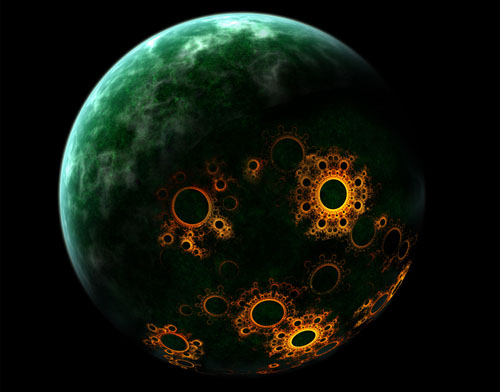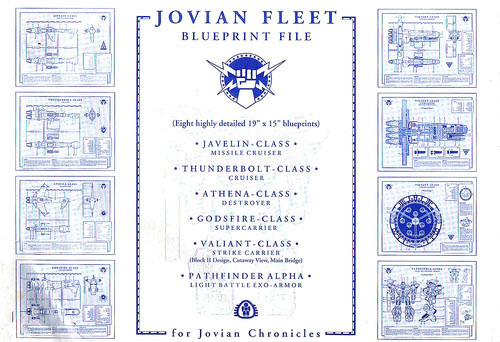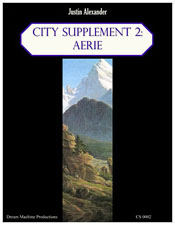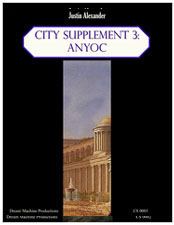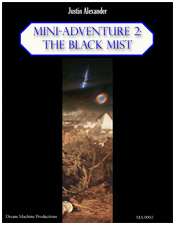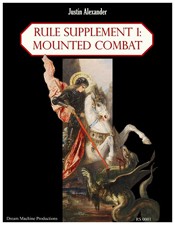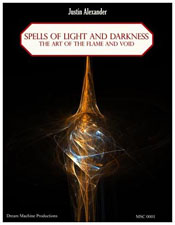Tagline: I like it. Damn.
 Awhile back I wrote a review of Heavy Gear’s Character Compendium. In that review I commented upon the fact that, as a general, rule I hated character compendiums, and that I generally found them to be wasted efforts.
Awhile back I wrote a review of Heavy Gear’s Character Compendium. In that review I commented upon the fact that, as a general, rule I hated character compendiums, and that I generally found them to be wasted efforts.
I also commented upon the fact that Dream Pod 9 had defied the odds and produced, in Character Compendium 1, not only one the best character compendium I had ever read, but also one of the best supplements I had read.
Because I had recently been reviewing so many Heavy Gear products with almost unreserved praise, I jokingly commented at the end of this review that I had almost given up hope that I would find a bad Dream Pod 9 product in the form of a character compendium. However: “Maybe if I take a look at GM screens, the single largest excuse to waste cardboard the world has ever produced. Maybe…”
Well, I’ve finally taken a look at a GM screen… and I’ll be damned if I don’t love what the Pod has done here.
THE SCREEN
First things first: A screen comes with two components – the artwork on the player’s side and the reference material on the GM’s side.
For anyone familiar with Dream Pod 9’s previous work, it shouldn’t take brain surgery to figure out that the artwork they’ve produced here is stunning. It depicts a convoy of JAF ships – several disappearing off the edges of the screen, a Javelin-class missile cruiser on the left side, and the JSS Valiant screaming right out of the center panel. The convoy is surrounded by an exo-armor escort.
If you look at the artwork it is, as noted, fantastic and more than pleasing to the eye. On the other hand, the Pod has also selected a coloring scheme which allows your eye to easily slide past the depicted scene. Several screens I’ve seen are so gaudy that they distract and detract from the game session – this one can only add to the experience.
On the other side you have some reference tables: Roleplaying Game Tables on the left panel, Tactical Game Tables on the right panel, and Non-Player Characters on the center panel.
The roleplaying panel is unquestionably well done. They provide a threshold reference, attack and defense modifiers, movement speeds, as well as the tables of dealing with fires and electrical damage. They also include a master skill list, which is always useful for remembering which attribute goes with which skill. Finally they include the “Skill Improvement Costs” table, which is completely worthless. Character creation and/or advancement information does not need to go on a GM screen, because it does not need to be commonly referenced during gameplay.
The tactical game tables are quite suitable as well, but I have to question the inclusion of this panel at all. Even in a campaign with an integrated tactical campaign, I’m not commonly going to be sitting behind my GM screen while doing so. I would have been happy with a simple, separate cardstock reference sheet.
But my biggest beef with the inclusion of the tactical game tables is that there are several roleplaying tables which are, as a result, left off, which should have been included: Secondary Trait Formulas (I know what I said about character creation info, but the data on generating UD, AD, and wounding scores is useful info for improvised NPCs during combat); an equipment (or at least weapon) reference; atmosphere loss; rad contamination values; irradiation table. Why, for example, are the fire and electrical tables included, but not the radiation tables? And, quite frankly, weapon statistics are one of the primary things I need to reference during a game. The Pod should have seriously considered dropping the tactical tables, or included a fourth panel like the Storyteller screens.
The Non-Player Character panel was originally of questionable value to me, but I quickly realized it’s value: The archetypes are laid out in a table format which allows me not only to quickly reference them, but also to modify them in minor ways. This is incredibly useful when your players suddenly go off on a tangent and you find yourself with a need to improvise a bunch of NPCs very rapidly.
All in all, the screen is good, but not great, with some noticeable areas which are lacking.
THE BOOK
Where the product makes up for the flaws of the screen, however, is the book which comes with it — Gamemastering Made Easy. This is a bit of inversion over the laws of the natural universe as I have previously observed them: I always believed having the dorky little booklets included with GM screens be of high quality violated some galactic law. This, more than anything else is what usually kills my interest in GM screens – even if the screen was of mind-blowing quality, there’s no way it’s worth $15 or $20 in its own right (and the book never even justified why a tree was killed for its existence).
A lot of these little booklets purport to be “GM guides” of one variety or another, and this one is no exception. The difference lies entirely in the fact that reading through this book you are struck not only by the amount and depth of advice provided, but also its genuine usefulness. I’ve been GMing for a decade now, and there were still some approaches and techniques discussed in this text which took me by surprise.
The book opens with a general overview of what GMing entails. This takes about three pages and discusses the basic tools of the GM trade; what defines the job; how to balance the GM’s roles as referee, opponent, and god; game balance; impartiality; and a few tips on good recordkeeping. The book then goes on to detail how GM’s need to interact with players (highlights being how to find players and various types of players). Move along to the player characters (how to design them, how to fit them into a campaign, how to make a campaign fit the characters, how to motivate them, and some other stuff). Notable in this section are the suggestions for the pre-designed “character story”, which provides a rough guideline of where a character is where he’s going in dramatic terms. Also, the guidelines on how to construct an effective death scene for a PC is interesting.
Progressing along quite naturally we encounter NPCs, which provides the GM with tips on how to improvise NPCs on the run, as well as how to use NPCs effectively (with additional guidelines for effective playing of villains).
Then we come to a section on the rules, where the philosophy for following (and breaking) the rules is discussed, along with improvisation.
The GM is then treated to a discussion of plots and subplots (including how to make an exciting concept, how to incorporate effective subplots, coming up with ideas). One nice feature here are the “plot movers” – a two page list of things such as “assassins” and “beat the clock” which can be used by the GM to, well, move the plot.
Guidelines for fumbles are detailed (for a number of various common activities), combat is given an overview (including useful tactics, different types of combat scenes you can use, and how to use combat effectively in a campaign).
In my review of the Jovian Chronicles rulebook I mentioned that there were several different options for using the tactical system, depending on the level of detail, accuracy, and complexity you were looking for. Another one is added here in the form of the “Dramatic Tactical System”, which does a really great job of providing an effective map-less tactical option.
We then proceed into the world section – techniques for describing the world, dramatic settings, etc. Finally, we get several pages of work and reference sheets. These include an event tracking sheet, a campaign checklist, a PC personality worksheet, a quick character generation reference, a quick mechanical design reference sheet, a reference for perks and flaws, and a system design quick reference sheet. Most notable among these references, however, are the “Planetary Ephemerides” for 2210-2212 – these provide the distances between all of the major planets for those three years and, naturally, are a very good resource for any roleplaying campaign. Extreme kudos for Dream Pod 9 for including them.
In short, the book provides a broad range of tools which you can use as you want and totally at your discretion. Its advice is solid and useful. Its utility is constant. This isn’t throwaway fluff – it’s a seriously useful addition to you Jovian Chronicles campaign.
The package is marred with a few flaws:
First, never recycle cover art. There is a lot of original artwork in this book, but for some reason one or two of their images are recycled from the covers of other Jovian Chronicles supplements. The problem with this is that the covers are memorable because, well, they’re covers. TSR used to do this from time to time and it never worked. If you must recycle a piece of artwork, use one from a book’s interior.
Second, never repeat text from the core rulebook in a supplement. It is completely gratuitous. They only do this in one short passage on pg. 19, but I found it incredibly annoying. It was, admittedly, natural to re-cover the same ground found in the core rulebook (because they were about to expand on the ideas found there), but they could have rephrased the passage.
Finally, they had a couple of incongruous comments regarding method acting – one was negative (in describing people who go over the top in their roleplaying to the detriment of the game as “method actors”) and one was positive (in referring, if I recall correctly, to roleplaying as basically being a derivative of method acting). Neither is quite correct (although the negative is certainly farther off the mark than the positive). If you must use technical terms (which “method acting” is), make sure you’re using them correctly.
CONCLUSION
I can’t say that this is quite worth the $20 the Pod wants for it (I’d be happier in the $15-18 range), but I will offer a suggestion that you track down a copy – particularly if you’re someone who typically likes GM screens more than myself. The book alone is a valuable, repeatably usable, resource that you should definitely take a look at if you get a chance.
Style: 5
Substance: 4
Author: Jean Carrieres, Marc A. Vezina, Philippe R. Boulle
Company/Publisher: Dream Pod 9
Cost: $19.95
Page Count: 50
ISBN: 1-896776-35-3
Originally Posted: 1999/08/24
As I mentioned in commentary on my review of the Heavy Gear: Character Compendium, my opinion of character compendiums have not improved over the last thirteen years, but my opinion of properly executed GM screens is much higher. (Unfortunately, most GM screens are still fairly horrid in their execution.)
At the time I was writing this review, I was going through a rather horrid educational experience in which a theatrical curriculum supposedly featuring “Stanislavski technique” (from which “Method acting” is derived) was actually teaching something significantly different. It didn’t make much difference to me (who had previously trained in actual Stanislavski technique and even taught workshops on it), but I was watching the theatrical equivalent of a bunch of kids being taught Creation “Science” before being sent off to college to be rudely awoken when they discover that they have been miseducated. As a a result, I was extremely sensitive to acting terminology being misused. I have not revisited this book recently, but I rather suspect that my reaction to its discussion of Method acting is almost certainly disproportionate.
You can never really know what biases a reviewer is bringing them (either consciously or unconsciously). All you can really hope is that they have done their job in providing an adequate factual platform for their opinions that you are also free to draw opinions of your own.
For an explanation of where these reviews came from and why you can no longer find them at RPGNet, click here.

